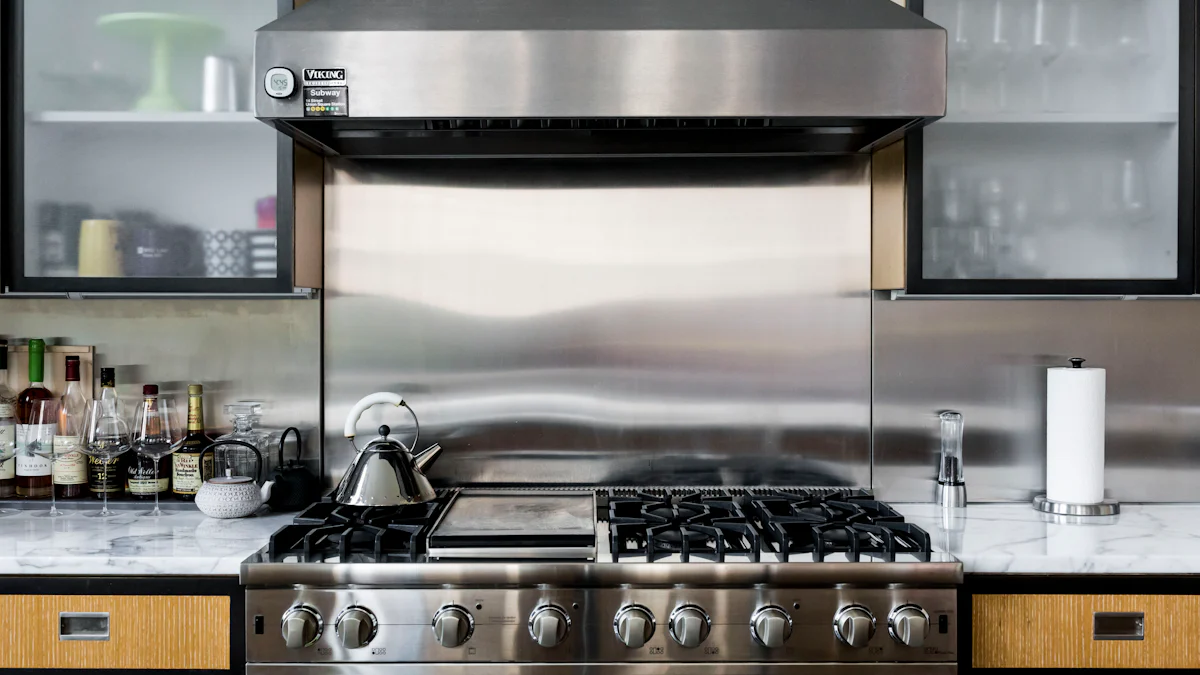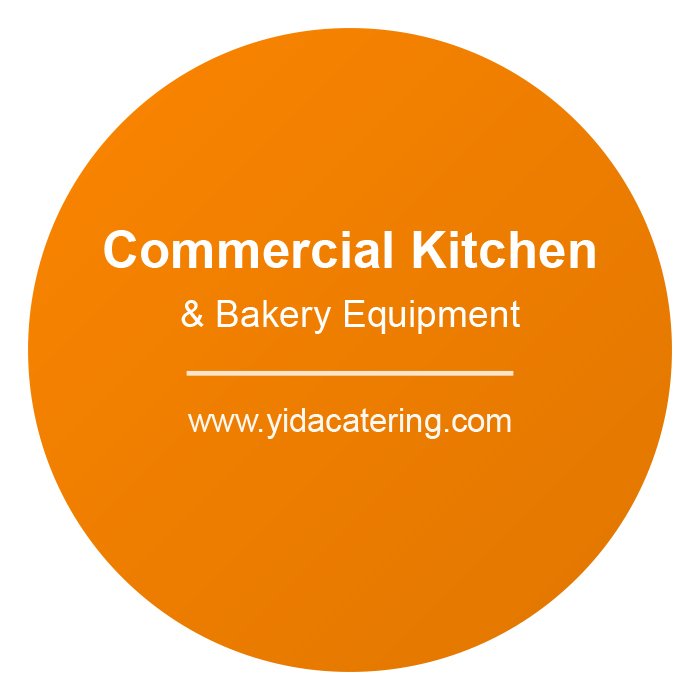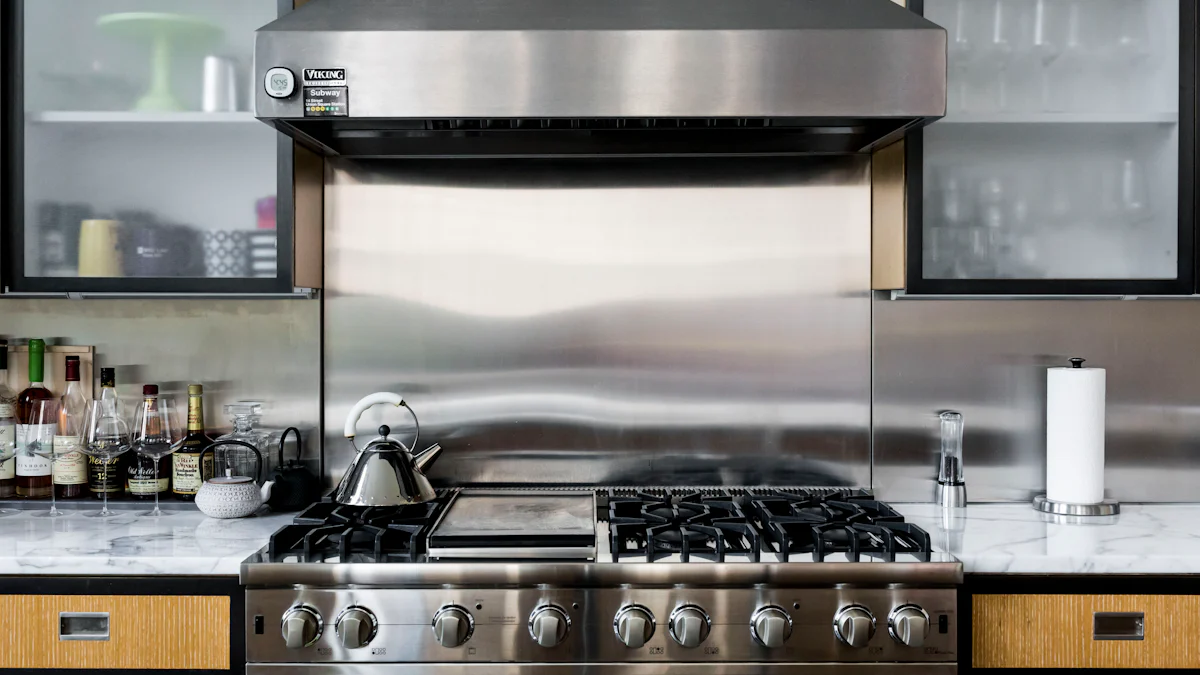
Essential Kitchen Equipment
Efficiency Comparison
When considering commercial restaurant ranges, one crucial decision to make is whether to opt for gas or electric models. Each type offers distinct advantages in terms of efficiency. Gas ranges are known for their quick heat-up times and precise temperature control, making them ideal for high-volume cooking. On the other hand, electric ranges are praised for their even heat distribution and consistent cooking results. Understanding the efficiency differences between gas and electric ranges is essential in selecting the best option for your kitchen.
Cost Analysis
Another factor to consider when choosing between gas and electric commercial restaurant ranges is the cost implications. While gas ranges may have a higher upfront cost due to installation requirements, they tend to be more cost-effective in the long run due to lower utility expenses. Electric ranges, on the other hand, are often more affordable initially but can result in higher energy bills over time. Conducting a thorough cost analysis can help you determine which type of range aligns best with your budget and operational needs.
Gas vs. Electric
Efficiency Comparison
When comparing gas and electric ranges, one significant aspect to consider is their efficiency in cooking. Gas ranges are favored for their ability to provide instant heat, allowing for quick temperature adjustments during cooking. This feature is particularly beneficial in busy commercial kitchens where speed is essential. On the other hand, electric ranges are known for their consistent and even heat distribution, ensuring that food is cooked uniformly without hot spots. Understanding the efficiency differences between gas and electric cookers can help you determine which type aligns best with your specific cooking needs.
Cost Analysis
In addition to efficiency, the cost implications of choosing between gas and electric cookers play a crucial role in the decision-making process. While gas ranges may have a higher initial installation cost, they are often more cost-effective in the long term due to lower utility expenses. Electric ranges, on the other hand, are generally cheaper upfront but can lead to higher energy bills over time. Conducting a thorough cost analysis that considers both the initial investment and long-term operational costs can assist you in selecting the most economical option for your commercial kitchen setup.
-
Gas ranges offer instant heat control.
-
Electric ranges ensure consistent heat distribution.
-
Consider both upfront costs and long-term utility expenses when making your decision.
Diverse Oven Options
Types of Ovens
In the realm of commercial kitchens, oven types play a crucial role in determining the cooking capabilities and efficiency of the establishment. Understanding the diverse array of ovens available can help you make an informed decision when selecting the best fit for your kitchen setup.
-
Convection Ovens: Convection ovens are equipped with fans that circulate hot air, allowing for faster and more even cooking. These ovens are ideal for baking, roasting, and reheating dishes efficiently.
-
Deck Ovens: Deck ovens feature stone or ceramic decks where food is placed to cook. They are well-suited for baking bread, pizzas, and other items that benefit from direct heat contact.
-
Rotisserie Ovens: Rotisserie ovens rotate meats on a spit, ensuring even cooking and browning. These ovens are perfect for preparing succulent roasted meats with a crispy exterior.
-
Combination Ovens: Combination ovens offer both convection and steam cooking functionalities in one unit. This versatility allows chefs to roast, bake, steam, and more within the same appliance.
-
Pizza Ovens: Pizza ovens are designed specifically for crafting delicious pizzas with crispy crusts and perfectly melted cheese. These specialized ovens reach high temperatures quickly to achieve that authentic pizzeria taste.
Exploring the various Commercial Oven Varieties available can help you tailor your kitchen equipment to suit your menu offerings and cooking preferences effectively.
Functionality Features
When evaluating the functionality features of commercial ovens, several key aspects should be considered to ensure optimal performance:
-
Temperature Control: Precise temperature control is essential for achieving consistent cooking results across different dishes.
-
Cooking Modes: Look for ovens with multiple cooking modes such as bake, roast, broil, and proof to accommodate a variety of culinary techniques.
-
Cleaning Ease: Opt for models with self-cleaning features or removable components to simplify maintenance tasks.
-
Energy Efficiency: Choose energy-efficient ovens to reduce operational costs while minimizing environmental impact.
By understanding the diverse oven options available and considering essential functionality features, you can select a commercial oven that enhances productivity and culinary excellence in your kitchen.
Sturdy Kitchen Gear
Durability Matters
When outfitting your commercial kitchen, investing in heavy-duty ranges and robust kitchen appliances is paramount to ensure long-term durability and reliable performance. Opting for equipment built with high-quality materials and sturdy construction can withstand the rigors of a bustling kitchen environment.
Selecting heavy-duty ranges that are specifically designed for commercial use guarantees that they can handle the demands of continuous cooking and high-volume food preparation. These ranges are constructed with durable components that resist wear and tear, ensuring they remain functional even under heavy usage.
In addition to ranges, prioritizing robust kitchen appliances across all aspects of your kitchen setup—from refrigeration units to food preparation equipment—ensures a seamless workflow and minimizes downtime due to equipment failures. Quality craftsmanship and adherence to industry standards are key factors in assessing the durability of kitchen gear.
By focusing on durability when choosing your kitchen equipment, you not only safeguard your investment but also maintain efficiency in your culinary operations. Prioritizing long-lasting, heavy-duty gear sets the foundation for a productive and reliable kitchen environment.
Quality Assurance
Ensuring that the quality of your kitchen gear meets industry standards is essential for maintaining a safe and efficient workspace. When selecting commercial restaurant ranges and other essential equipment, it is crucial to verify that they are certified by relevant regulatory bodies and comply with safety guidelines.
Conduct thorough research on reputable brands known for their commitment to quality assurance in manufacturing commercial kitchen equipment. Look for warranties, certifications, and customer reviews to gauge the reliability and performance of the products you intend to purchase.
Regular maintenance checks and inspections further contribute to upholding quality standards in your kitchen gear. By adhering to recommended maintenance schedules and promptly addressing any issues that arise, you prolong the lifespan of your equipment while ensuring optimal functionality.
Prioritizing quality assurance not only instills confidence in the safety of your kitchen operations but also reflects a commitment to excellence in culinary practices. By investing in high-quality, industry-compliant kitchen gear, you set the stage for success in delivering top-notch dining experiences.
Efficient Cooking Space
Optimizing Kitchen Layout
Creating an efficient cooking space in your commercial kitchen involves strategic planning and layout optimization. By carefully organizing your kitchen layout, you can streamline workflow, enhance productivity, and create a conducive environment for culinary excellence.
Here are some key strategies to optimize your kitchen layout:
-
Workflow Efficiency: Arrange your cooking stations in a logical sequence to minimize movement between tasks. Designate specific areas for prep work, cooking, plating, and cleaning to ensure a smooth flow of operations.
-
Equipment Placement: Position your commercial restaurant ranges, ovens, and other essential equipment strategically to facilitate easy access and efficient use. Consider the workflow of your kitchen staff when placing appliances to minimize unnecessary steps.
-
Storage Solutions: Incorporate ample storage space for ingredients, utensils, and cookware within close proximity to workstations. Utilize shelving units, cabinets, and drawers to keep supplies organized and easily accessible during food preparation.
-
Safety Considerations: Ensure that aisles are wide enough for staff members to move comfortably without obstruction. Implement safety measures such as non-slip flooring and proper ventilation to maintain a safe working environment.
By optimizing your kitchen layout with these considerations in mind, you can maximize efficiency, promote teamwork among staff members, and create a productive kitchen environment that enhances the overall dining experience for your customers.
Temperature Control
Temperature control is a critical aspect of maintaining consistency in cooking outcomes and ensuring food safety standards are met in a commercial kitchen setting. Precise temperature regulation not only influences the quality of dishes but also impacts operational efficiency.
Key factors to consider for effective temperature control include:
-
Calibrated Equipment: Regularly calibrate your ovens, stovetops, and refrigeration units to ensure they maintain accurate temperature settings. Inaccurate temperatures can lead to undercooked or overcooked food items.
-
Thermometer Usage: Use reliable thermometers to monitor internal food temperatures during cooking processes. This practice is particularly important when preparing meats and other perishable items that require specific temperature thresholds for safe consumption.
-
Adjustable Settings: Invest in equipment with adjustable temperature settings that allow chefs to fine-tune heat levels based on different cooking requirements. This flexibility enables precise control over the cooking process for consistent results.
By prioritizing temperature control through proper equipment calibration, thermometer usage, and adjustable settings, you can uphold quality standards in food preparation while optimizing operational efficiency in your commercial kitchen setup.
Maintenance and Features
Routine Maintenance
Maintaining your commercial kitchen equipment is essential to ensure optimal performance and longevity. Regular equipment upkeep not only prevents unexpected breakdowns but also upholds safety standards in the kitchen environment. Establishing a routine maintenance schedule for your restaurant ranges and other appliances can save you time and money in the long run.
To effectively maintain your equipment, consider the following routine tasks:
-
Cleaning: Regularly clean and degrease your commercial restaurant ranges to prevent buildup that can affect efficiency. Pay attention to burners, grates, and oven interiors to maintain hygiene standards.
-
Inspections: Conduct regular inspections of your equipment to identify any signs of wear or damage. Check for loose components, gas leaks (for gas ranges), or electrical issues (for electric ranges) that may require immediate attention.
-
Calibration: Ensure that your temperature settings are accurate by calibrating your ovens and stovetops regularly. Inaccurate temperatures can lead to uneven cooking results and food safety risks.
By incorporating routine maintenance practices into your kitchen operations, you not only prolong the lifespan of your equipment but also create a safer and more efficient working environment for your staff.
Comparing Features
When selecting commercial restaurant ranges, comparing the features of different models is crucial in making an informed decision. Each range comes with unique specifications that cater to specific cooking needs and preferences. By evaluating these features, you can choose a range that aligns best with your culinary requirements.
Key features to compare when assessing commercial restaurant ranges include:
-
Cooking Capacity: Consider the size and number of burners or heating elements available on each range to accommodate your cooking volume.
-
Control Options: Look for ranges with intuitive control interfaces that allow for precise temperature adjustments and cooking settings customization.
-
Energy Efficiency: Assess the energy consumption ratings of different models to choose a range that minimizes operational costs while being environmentally friendly.
-
Safety Features: Prioritize ranges equipped with safety features such as flame failure devices, overheating protection, or automatic shut-off functions for enhanced kitchen safety.
By comparing the features of various commercial restaurant ranges, you can select a model that not only meets your cooking requirements but also enhances efficiency and safety in your kitchen operations.
Choosing Wisely
Selecting the Ideal Equipment
When it comes to outfitting your kitchen with professional kitchen appliances, careful consideration is key. Assessing your specific cooking needs, budget constraints, and space requirements can help you make a well-informed decision when selecting the best commercial restaurant ranges for your establishment.
Evaluating Performance Factors
Before making a final choice, evaluate essential performance factors such as cooking capacity, energy efficiency, safety features, and ease of maintenance. Each of these aspects plays a crucial role in ensuring that your chosen professional kitchen appliances meet the demands of a busy commercial kitchen environment.
-
Cooking Capacity: Determine the optimal size and configuration of commercial restaurant ranges based on your menu offerings and daily cooking volume.
-
Energy Efficiency: Look for models that prioritize energy conservation to reduce operational costs over time.
-
Safety Features: Prioritize ranges equipped with advanced safety features to mitigate potential risks in the kitchen.
-
Maintenance Considerations: Choose equipment that is easy to clean and maintain to prolong its lifespan and optimize performance.
By carefully weighing these factors and selecting equipment that aligns with your operational needs, you can set the foundation for a successful and efficient kitchen setup.


